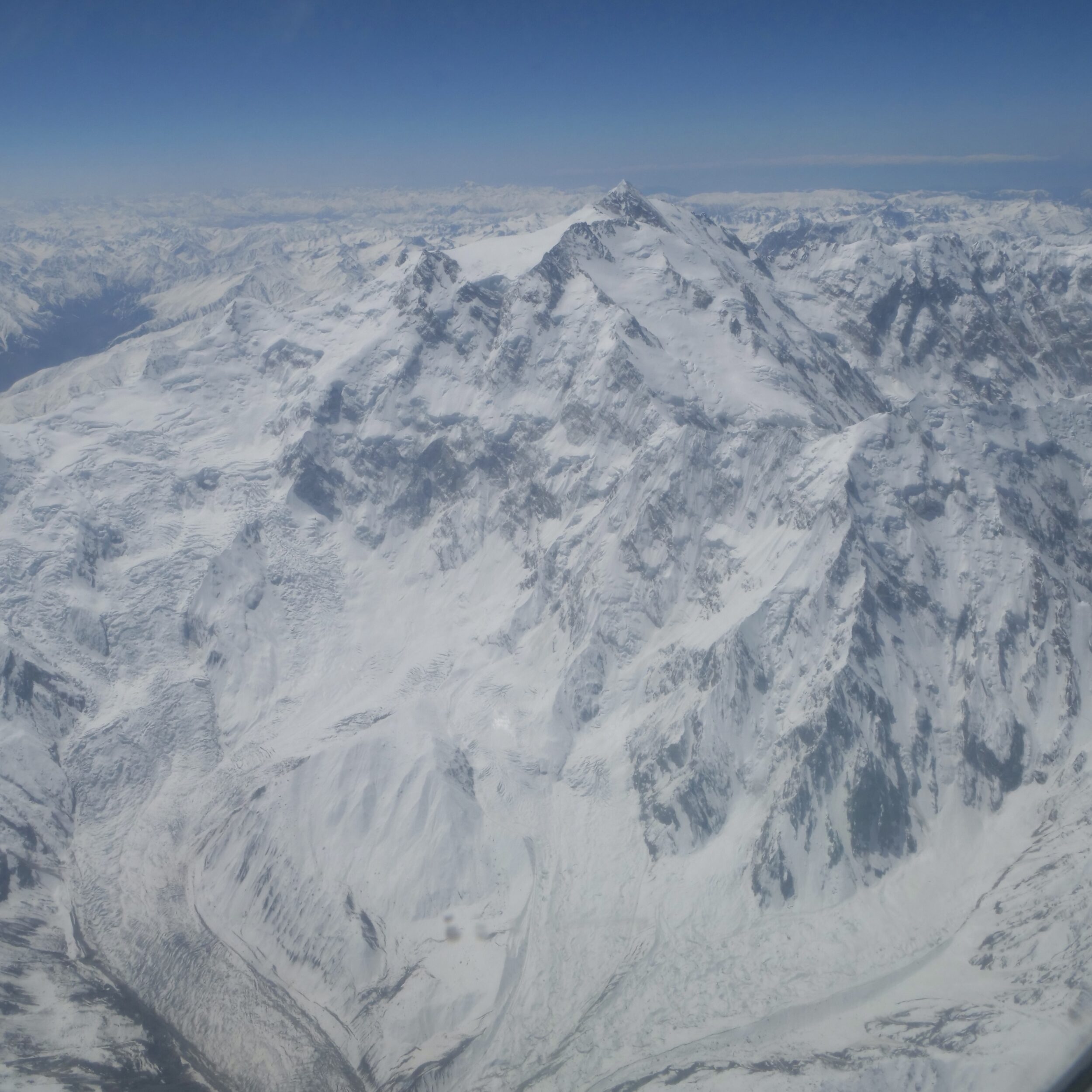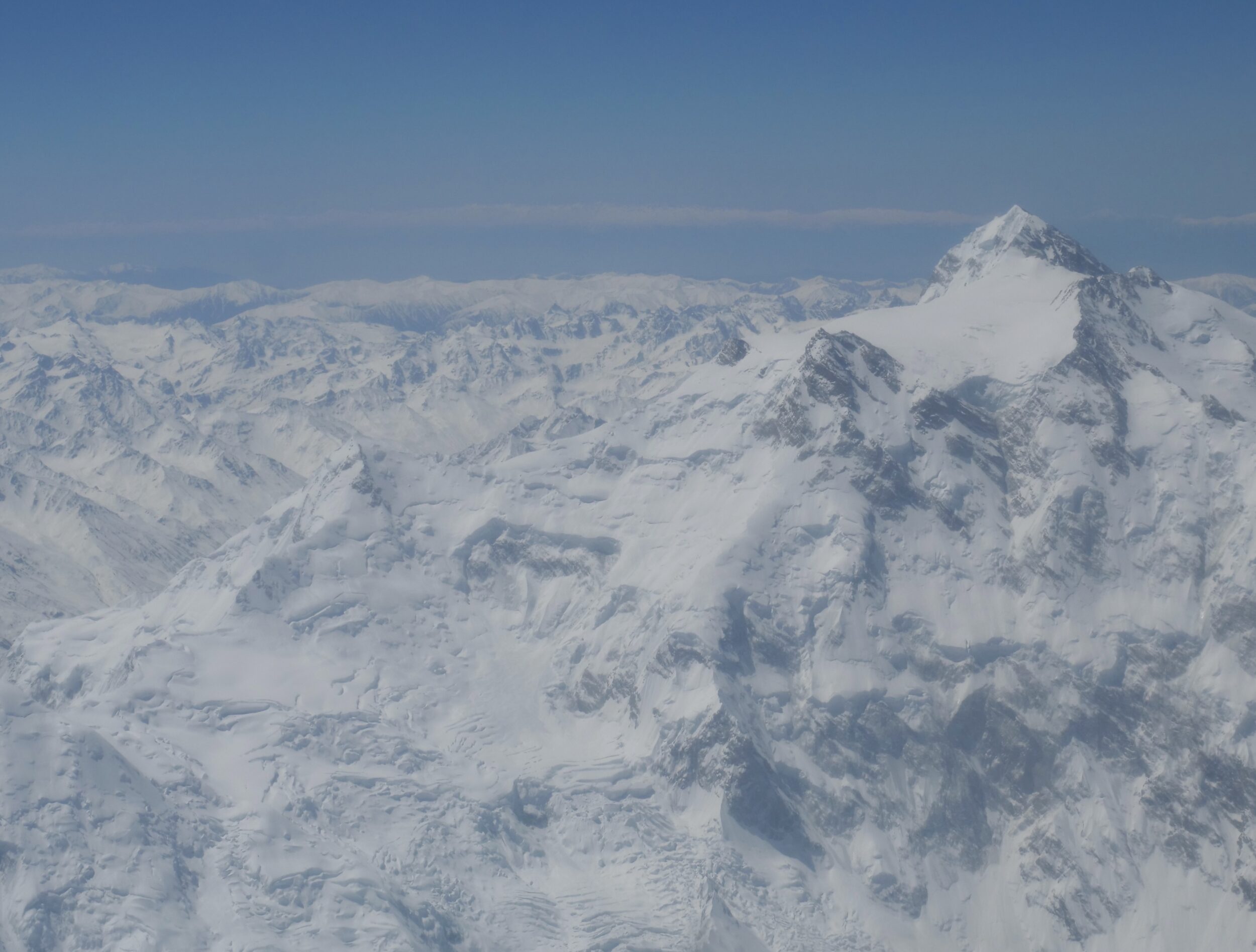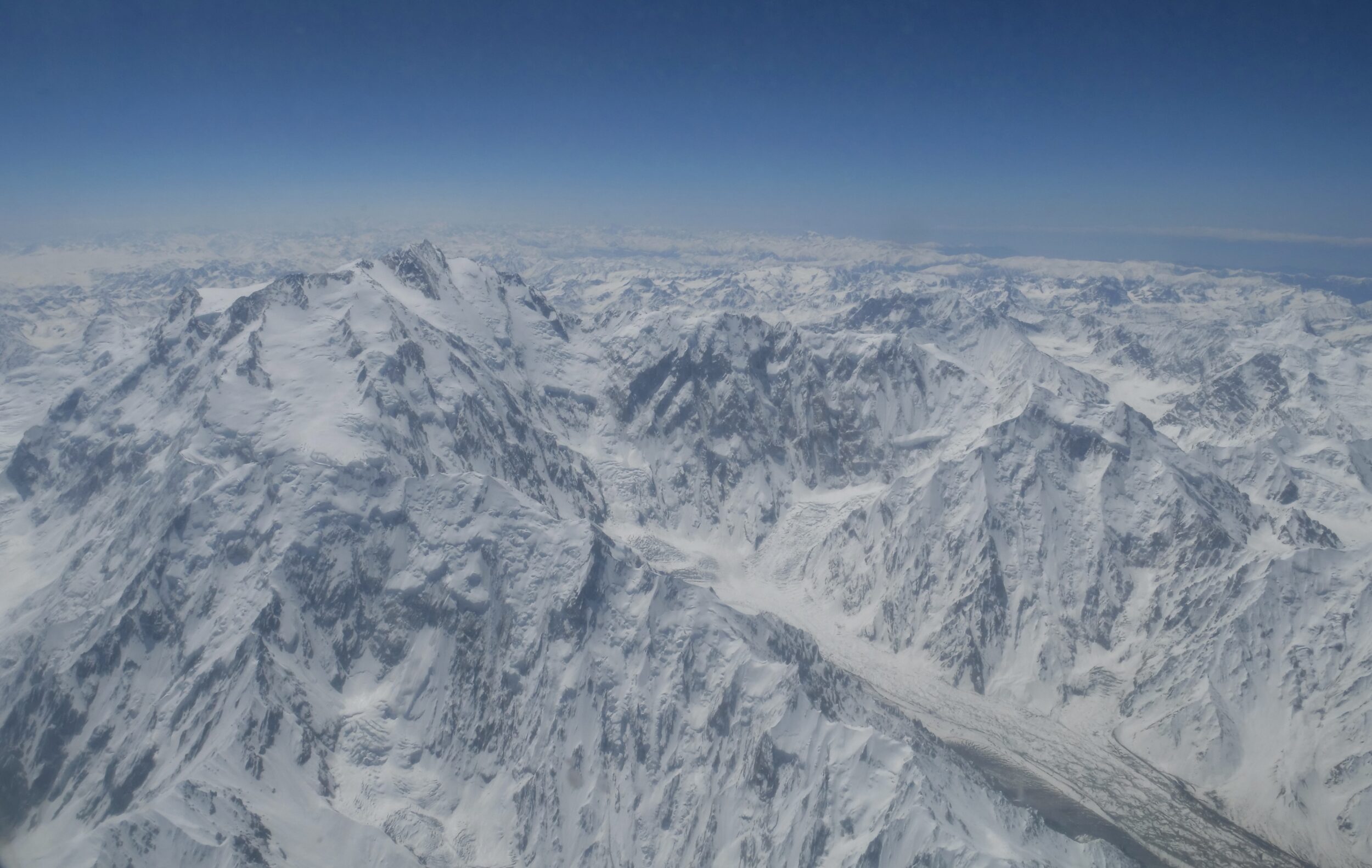This post’s hero is the westernmost major Himalayan Peak.
Nanga Parbat (8, 126 metres above sea level) is “our” planet’s 9th highest mountain.
Flights from Islamabad to Skardu pass by Nanga Parbat’s western and northern sides.
In terms of how it stands in relation to the terrain around its base, Nanga Parbat is enormously taller than Everest.
It is often credited as offering an appropriately-located human’s eyes the greatest amount of uninterrupted, solid “up” that a human can see, anywhere.
(I think that title actually belongs to Rakaposhi, which towers above the Hunza Valley; standing in the Hunza Valley, with an uninterrupted view of Rakaposhi’s prodigiously huge flank, one is looking up to a summit which is a further 5,800 metres above sea level than are one’s eyes. A few days after we flew past Nanga Parbat, our feet were relatively near to Rakaposhi’s “foot”, on a clear day)
Nanga Parbat’s base is much more easily-accessed than Everest’s; its summit, however, is more challenging than Everest’s.
Attempts to summit the former preceded the latter; both were “conquered” in 1953 – Everest first, Nanga Parbat a little more than a month later.
At that stage Nanga Parbat had richly earned its nickname; the “killer mountain” had claimed more than twice as many climbers’ lives than had Everest.
(Post-1953, Everest has topped the “death table”, handsomely. Inevitably, wealthy idiots are more likely to risk their own and other peoples’ lives on the world’s highest mountain than on “number 9”)
On 15 May 2024, I had an unobstructed, window seat on the right (and “right”) side of our Skardu-bound plane.
Less fortunately, “my” window was absolutely filthy, not made of glass, and highly-distorting.
Also, reflections and glare were abundant/ unavoidable, and the sun was not in the “right” part of the sky.
Accordingly, this post’s photos are far from flawless.
Even so…..

All three photos were taken within the space of circa 100 seconds, while the plane wheeled rightward, as it skirted Nanga Parbat.
The top two are wide-angle shots.
The bottom one was taken at 56mm, so its “sense of scale” is roughly akin to that of a human’s, looking through naked eyes.

Click this to discover more about Nanga Parbat. (and to see some better photos)
